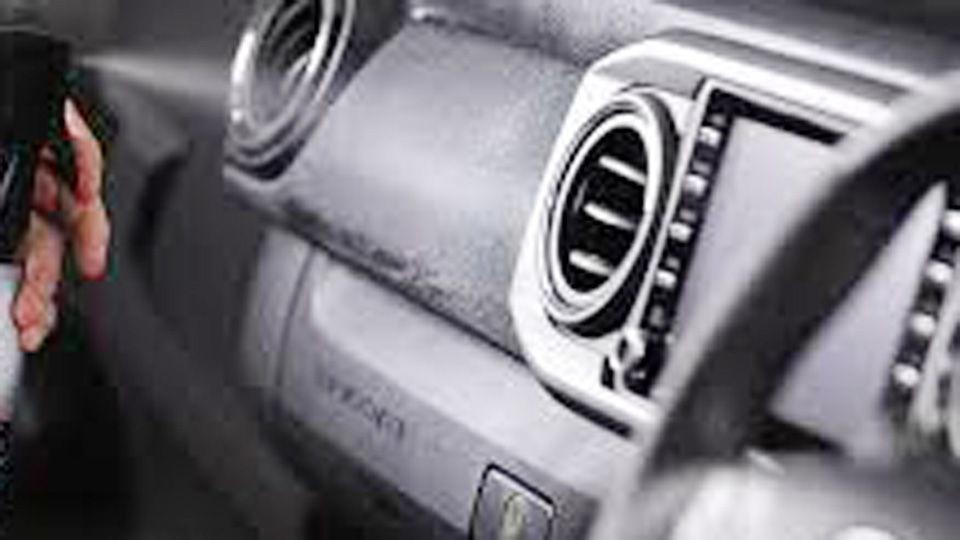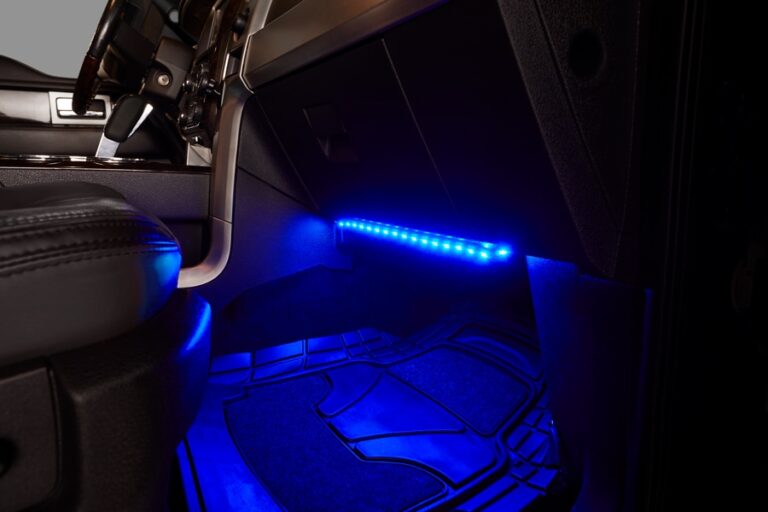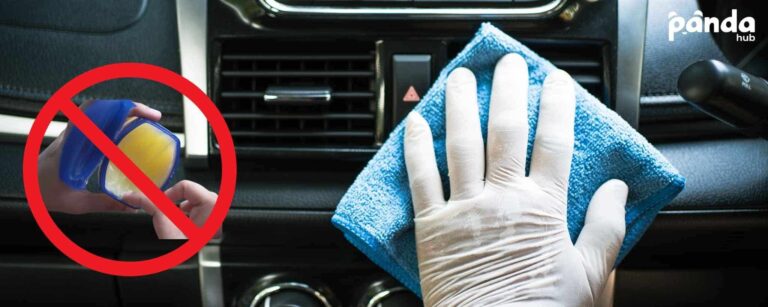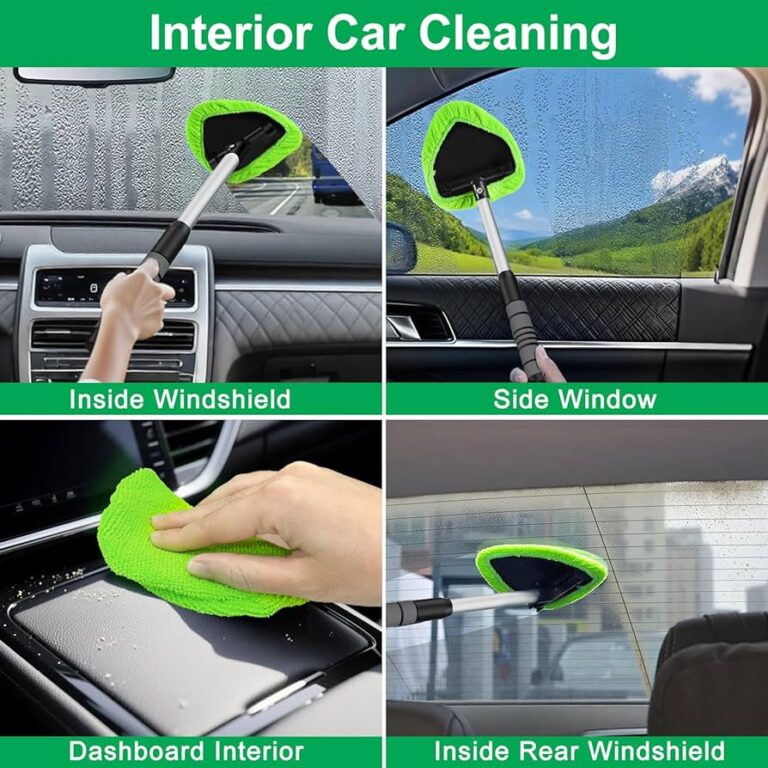Spray painting car interior plastic is one of those DIY upgrades that can totally refresh the look of your cabin without breaking the bank. Over the years, I’ve had plenty of customers ask me “How to Spray Paint Car Interior Plastic?”—usually after their trim has faded, scratched, or just doesn’t match their style anymore. The truth is, it’s not hard to do, but the difference between a cheap-looking job and a clean, professional finish comes down to prep work and patience.
I’ve sprayed plenty of interior panels in my garage, and the biggest mistake I see people make is rushing—slapping paint on without cleaning, sanding, or using the right primer. Interior plastics have a slick surface that paint doesn’t naturally stick to, so proper prep is everything. When done right, you can get a smooth, durable finish that looks factory-made and holds up against daily wear. In this guide, I’ll walk you through the steps—from removing and prepping the panels to choosing the right paint and applying it evenly—so you can transform your car’s interior like a pro.

Image by turtlewax
Why Bother Spray Painting Car Interior Plastic?
Picture this: You’re cruising down the highway in your trusty Ford F-150, but every time you glance at the dash, those sun-bleached plastics stare back like they’ve seen better days. Car interior plastic parts—like vents, handles, bezels, and panels—are engineered for toughness, but they’re not invincible. They shield critical components, provide ergonomic comfort, and contribute to the overall aesthetics of your vehicle.
These plastics matter for more than vanity. Faded or damaged interiors can distract you while driving, potentially affecting safety. Plus, in terms of performance, cracked plastics might expose wiring or allow dust to infiltrate, leading to electrical gremlins down the road. Cost-wise, repainting beats replacement hands down—I’ve saved clients hundreds by refreshing a Chevy Silverado’s console instead of sourcing OEM parts. Reliability? A good paint job adds a protective layer against UV rays and scratches, extending the life of these components. And let’s not forget fuel efficiency indirectly—keeping your interior in top shape means you’re less likely to trade in your efficient ride prematurely.
From my experience, this DIY project shines for older models where parts are hard to find. Think ’90s Hondas or early 2000s Toyotas—their plastics yellow like old newspaper, but a fresh coat of paint restores that factory vibe.
Common Issues with Car Interior Plastic and Signs It’s Time for a Refresh
Interior plastics take a beating from sun exposure, spills, and constant touching. UV rays cause fading and brittleness, turning black trim to grayish hues. Scratches from keys or cargo build up, and in humid climates like Florida, mold can creep in if not cleaned properly.
Spot the signs early: If your dash feels sticky (that’s plasticizer leaching out), or colors have mismatched from wear, it’s time. Cracks might appear around high-stress areas like seat adjusters. In my shop, I’ve seen Jeeps with off-road abuse where door panels look like they’ve been sandblasted—painting seals those micro-abrasions.
Why act? Ignoring it leads to bigger problems. Faded plastics can heat up more in summer, straining your AC and indirectly hitting fuel economy. Safety-wise, sharp edges from cracks aren’t fun for passengers. I’ve had a customer in a Dodge Ram whose faded steering column trim distracted him enough to miss a pothole—small stuff escalates.
When and Why You Should Spray Paint Instead of Replace
Replacement makes sense for structural failures, like a shattered glovebox latch. But for cosmetic woes? Spray painting is the go-to. Do it when parts are intact but ugly—saving 70-80% on costs. For instance, a new GM dashboard panel might run $200-400, while paint supplies cost under $50.
Why paint? It’s customizable. Want to match your Wrangler’s exterior? Easy. It enhances reliability by adding UV protection, and in performance vehicles, a sleek interior reduces visual clutter for better focus. Cost is king—I’ve refreshed entire interiors in Subarus for what one OEM part costs. Fuel efficiency tie-in: Lighter paints don’t add weight like bulky replacements might.
From the garage: I once painted a client’s Volkswagen Golf interior plastics after a coffee spill disaster. Replacement would’ve been $300; we did it for $40 and a Saturday afternoon. The key? Assess if the plastic is ABS, polypropylene, or vinyl—each takes paint differently.
OEM vs Aftermarket Paint Options for Interior Plastics
OEM paints from brands like Dupli-Color (matched to factory codes) ensure perfect color harmony but cost more—around $15-25 per can. They’re formulated for automotive plastics, resisting chipping better.
Aftermarket? Krylon or Rust-Oleum offer budget-friendly alternatives at $5-10, with wider color choices for customs. But they might not bond as well without primers.
Here’s a quick comparison table:
| Aspect | OEM Paints (e.g., SEM, Dupli-Color) | Aftermarket (e.g., Krylon Fusion, Plasti Dip) |
|---|---|---|
| Price per Can | $15-25 | $5-15 |
| Color Matching | Excellent (factory codes) | Good, but may require mixing |
| Durability | High, UV-resistant | Medium, may fade faster |
| Availability | Auto parts stores like AutoZone | Home Depot, Walmart |
| Vehicle Fit | Specific to makes like Ford/Toyota | Universal |
Pros of OEM: Authenticity, longevity. Cons: Pricier, limited shades.
Aftermarket pros: Affordable, fun for mods. Cons: Potential peeling if prepped wrong.
In the US, check NAPA or O’Reilly for OEM matches—I’ve used SEM Color Coat on countless Fords with zero regrets.
Identifying Genuine vs Fake Spray Paints
Fakes flood online markets. Genuine cans have holograms or batch codes—Dupli-Color’s got tamper-evident seals. Fakes smell off or spray unevenly.
Tips: Buy from reputable US retailers like Advance Auto Parts. Scan QR codes on cans for authenticity. I’ve tossed fake Krylon that clumped like cottage cheese—ruined a whole panel on a test Honda Civic.
Preparing Your Car Interior for Spray Painting
Prep is 80% of the job. Start by removing parts if possible—door panels unclip easily in most domestics like Chevys. Clean with isopropyl alcohol to strip oils; avoid harsh solvents that melt plastic.
Mask off areas with painter’s tape—I’ve learned the hard way on a Toyota Camry when overspray hit the seats. Work in a ventilated garage; wear a respirator for fumes.
Anecdote: Helping a buddy with his Nissan Altima, we skipped degreasing once—paint bubbled like lava. Lesson? Always test on scrap.
Tools and Materials You’ll Need
Basics: Plastic primer ($10), adhesion promoter, sandpaper (400-600 grit), microfiber cloths.
Paints: SEM Flexible Coating for textured finishes, or VHT Vinyl Dye for soft-touch.
Tools: Screwdrivers for removal, drop cloths, gloves. Total cost? $30-60.
Safety first: Eye protection, gloves—plastics can harbor sharp edges. In my experience, a heat gun helps for stubborn adhesives without damaging.
Step-by-Step Guide: How to Spray Paint Car Interior Plastic
Let’s break it down like I’m right there with you.
Step 1: Disassemble. Remove screws and clips—use a trim tool kit ($15 on Amazon) to avoid scratches. For a Ford Focus dash, pop out vents gently.
Step 2: Clean thoroughly. Soap and water first, then alcohol wipe. Dry completely—moisture traps cause fisheyes.
Step 3: Sand lightly. 400-grit evens the surface. Wipe dust.
Step 4: Prime. Apply plastic primer in thin coats—2-3, drying 10 mins each. Krylon’s primer bonds great on polypropylene.
Step 5: Paint. Shake can well, spray from 8-10 inches in sweeping motions. 3-4 light coats, 5-10 mins apart. For matte finishes, stop here; gloss needs clear coat.
Step 6: Cure. Let dry 24 hours before reinstalling. Heat lamps speed it up in cold garages.
Common mistake: Heavy coats lead to drips. I’ve fixed many a runny job on GM trucks—patience pays.
Tips for Different Plastic Types
ABS plastics (common in dashes) take paint well but need promoter. Polypropylene (bumpers, trims) is slick—use fusion sprays like Krylon’s.
Vinyl? Dye over paint for flexibility. In Hyundais, I’ve mixed approaches for seamless results.
US-specific: Check compatibility with your model—EPA regs make some paints low-VOC, better for indoors.
Common Mistakes and How to Avoid Them
Rushing prep: Always degrease twice. I’ve seen paint lift off a Dodge Charger’s console because of overlooked fingerprints.
Wrong environment: Humid days? Wait—moisture ruins adhesion. In Texas heat, I’ve painted at dawn to avoid bubbling.
Over-sanding: Go light; deep scratches show through. Test colors on hidden spots—mismatched a BMW once, had to strip it all.
Maintenance post-paint: Clean with mild soap, avoid abrasives. UV protectant sprays like 303 keep it fresh.
Anecdote: A workshop regular brought his Ram 1500 with DIY paint peeling like sunburn. Culprit? No primer. We redid it properly—lasted years.
Maintenance and Long-Term Care for Painted Interior Plastics
Post-paint, treat ’em gently. Weekly dusting, monthly conditioning with plastic restorers like Armor All.
Signs of wear: If paint chips, touch up early. In sunny states like California, park in shade—UV is the enemy.
Reliability boost: Painted surfaces resist stains better, keeping your interior functional longer. Cost savings: Extends part life, delaying replacements.
From experience: My own ’05 Silverado’s interior plastics looked new after painting and yearly touch-ups—saved me from a $500 dash swap.
Pros and Cons of Spray Painting vs Professional Services
DIY pros: Cheap, satisfying. Cons: Time-consuming, risk of errors.
Pro shop: Flawless results, warranties. But $200-500 vs your $50.
For classics like Mustangs, DIY preserves authenticity. In performance cars, pros ensure no added weight or fumes.
Brand Recommendations for US Market
Top picks: SEM for OEM-like finishes—available at Pep Boys. Dupli-Color’s Vinyl and Fabric for soft plastics.
Budget: Plasti Dip—removable if you mess up, great for trials on Jeeps.
Compatibility: Ford owners, grab F-series matched paints. Toyota? Their plastics love Rust-Oleum’s adhesion.
Avoid generics from dollar stores—I’ve tested ’em; they flake fast.
How to Spot Fake Parts or Paints in the US
Counterfeits sneak into eBay. Genuine have MSDS sheets. Buy from certified dealers—AutoZone’s got authenticity guarantees.
I’ve rejected fake SEM cans with wonky labels—smell test: Real ones have a clean solvent scent.
Customizing Your Car Interior with Spray Paint
Beyond basics, get creative. Two-tone dashes in Subarus add flair. Hydro-dipping pre-paint for patterns.
Safety note: Don’t paint airbags or sensors—obstructs function.
Anecdote: Customized a client’s Honda Accord with metallic accents—turned a bland interior into a showpiece, all for under $100.
Performance tie-in: Lighter colors reflect heat, easing AC load for better efficiency.
Conclusion: Making Smarter Decisions on Car Interior Plastic Refresh
Wrapping this up, spray painting your car’s interior plastic is a game-changer for looks, longevity, and your wallet. Whether you’re dodging the cost of OEM replacements or just wanting that custom edge, this DIY approach empowers you to take control. Key takeaways: Prep meticulously, choose quality paints like SEM or Dupli-Color, and maintain with care to avoid common pitfalls. You’ll end up with a cabin that’s safer, more reliable, and easier on the eyes—potentially boosting your vehicle’s value too.
One final pro tip: Always do a test panel first, especially on older US models like GM or Ford trucks where plastics vary by year. It’ll save you headaches and ensure pro-level results. Hit the garage, and let’s keep those rides rolling strong.
FAQ
What kind of paint do you use on car interior plastic?
Stick to paints designed for plastics, like SEM Color Coat or Krylon Fusion. They flex without cracking. Avoid house paints—they’ll peel. From my fixes on countless Toyotas, adhesion promoters are non-negotiable for lasting bonds.
Can you spray paint plastic car parts without primer?
Technically yes, but don’t. Primer ensures adhesion, preventing flaking. I’ve seen unprimed jobs on Jeeps fail in months—always prime for durability, especially in humid US regions.
How long does spray paint last on car interior plastic?
Done right, 5-10 years with proper care. Factors like UV exposure shorten it. In my Silverado, painted plastics held up 8 years before needing touch-ups—use UV protectants to maximize.
Is it better to paint or replace car interior trim?
Paint for cosmetics; replace for damage. Painting saves money (under $50 vs $200+), but replacements ensure factory fit. For Fords I’ve worked on, painting refreshed 80% of issues without hassle.
What tools do I need to remove car interior plastic for painting?
Trim removal tools, screwdrivers, and pliers. A $20 kit from Harbor Freight works wonders. Safety gloves too—sharp clips can bite, as I learned on a stubborn Chevy dash.



